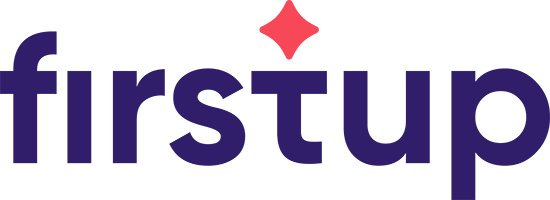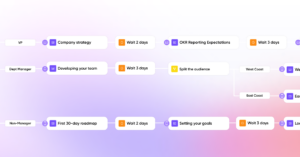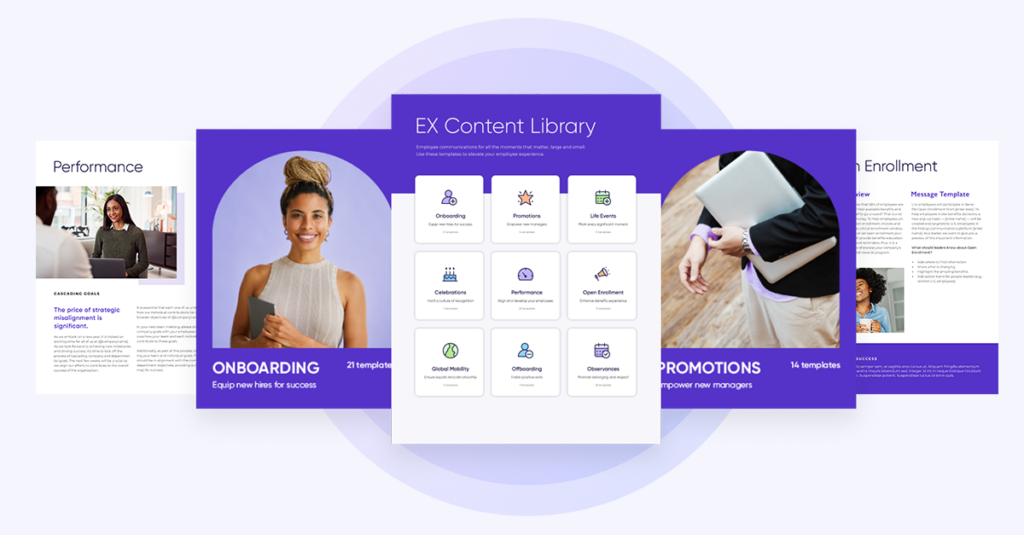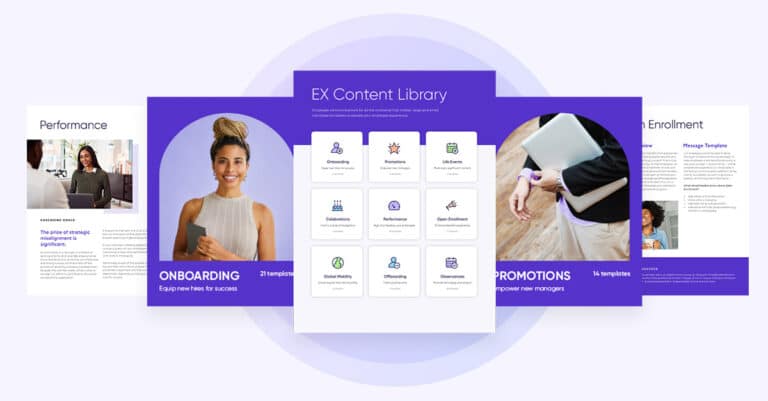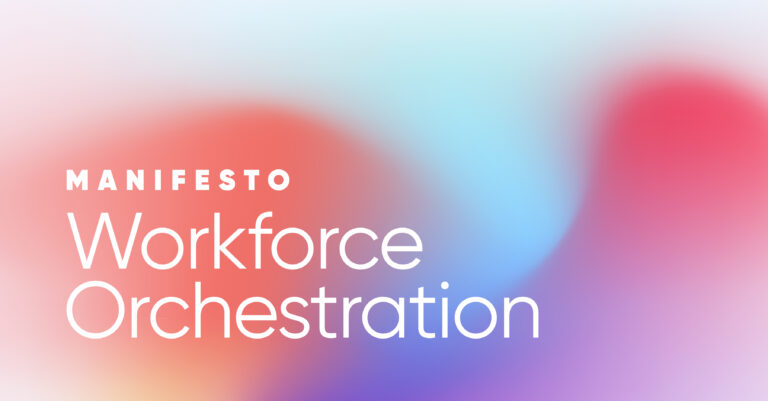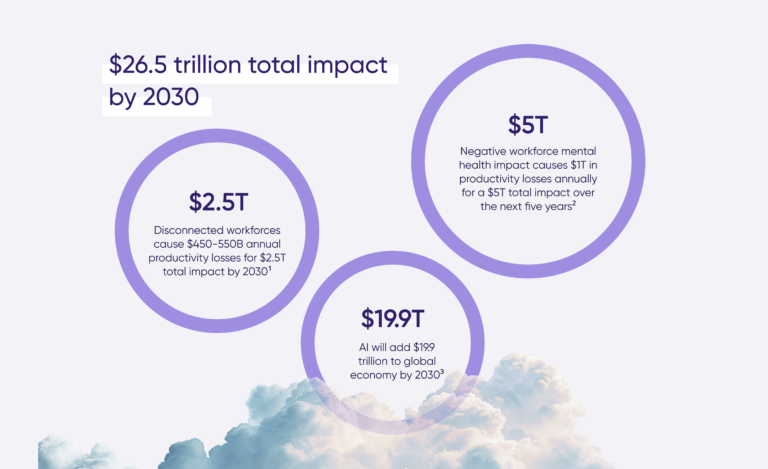If you lead internal communications, HR, or executive strategy, you’ve probably run into this paradox: your employees are getting more messages than ever, but many still feel out of the loop. Even with endless ways to share news, it’s surprisingly easy for the important stuff to get lost. In a world where information is everywhere (pushed through emails, chat apps, company portals, and even digital signs), how is it possible that people feel disconnected?
Today’s distributed workforces make this challenge even tougher. Employees are spread out across offices, remote locations, shop floors, and the front lines. This makes it harder to reach everyone with the right message at the right moment. Old-school approaches, like mass emails and basic chat platforms, just don’t cut it anymore. The result? Updates get missed, teams lose focus, and people start to tune out… or tune out altogether.
But there’s good news: the best internal communication tools can actually solve this problem. Research shows that companies with effective employee communication see productivity jump by 20-25%. But with so many tools on the market, how do you know which will truly help your people connect and deliver lasting value?
This guide was created for you, whether you’re focused on employee engagement, improving retention, or making sure business leaders and business goals are clearly communicated at every level. We’ll break down what current internal communication tools really are, explore what matters most in choosing one, and show you what it takes to build a stronger, more connected workplace. Whether you want to reach every frontline worker or help teams stay aligned, you’ll find practical, real-world advice you can put to work right away.
Let’s dig in and find a smarter way to connect.
Key Insights
- Employees often feel disconnected despite receiving more messages than ever, making effective internal communication tools essential.
- Distributed and frontline workforces require tools that deliver the right message at the right time across multiple channels.
- Modern platforms go beyond announcements, supporting real-time collaboration, knowledge management, employee engagement, and performance tracking.
- Intelligent communication platforms like Firstup stand out by offering hyper-personalization, analytics, and multi-channel orchestration at scale.
- The most effective tools provide multi-channel communication, seamless integrations, personalization, analytics, and enterprise-grade security.
- Investing in the right platform improves engagement, productivity, organizational culture, and overall employee experience.
- Successful adoption depends on aligning tools with organizational needs, planning change management, and setting clear governance and success metrics.
What are internal communication tools?

Internal communication tools are the digital tools and systems that help employees share information, ask questions, and stay connected, no matter where or how they work. These platforms aren’t just for blasting out company-wide announcements, though. They make it easy for teams to chat, collaborate, and solve problems together in real time.
Think about the mix of conversations happening across your organization every day. There are the formal updates (policy changes, HR reminders, leadership messages, etc.), that need to reach everyone. Then there are the informal, day-to-day discussions between coworkers, project feedback, and quick check-ins that keep work moving. The right internal communication tools connect both worlds, making sure everyone stays in the loop.
What makes these tools different? They’re built for employees, first and foremost. Unlike customer marketing platforms repurposed for internal use, these systems are designed for the unique needs of your workforce, including frontline, mobile workforce, and remote team members who may not sit at a desk.
Here’s what these tools actually do:
Information distribution
They make it simple to share important updates, announcements, and reminders, ensuring everyone receives relevant information no matter where they are.
Real-time collaboration
From quick questions to team chats, group conversations, or brainstorming sessions, these tools let employees connect and work together in the moment. Real-time collaboration keeps projects moving and helps teams feel closer, enhancing collaboration even when they’re working apart.
Knowledge management
A good platform organizes resources, documents, and conversations, and makes it easy to share files so people can find what they need, right when they need it.
Employee engagement
The best internal communication tools help employees feel heard and involved, building a more engaged workplace. Features like employee surveys, survey tools, feedback options, and employee recognition make gathering feedback easy for people to take part and share their voices.
Performance tracking
Finally, these platforms give you real insight into how communication is landing. You can see what’s working, spot gaps, and measure engagement, helping you make better decisions and improve over time.
Internal communication tools have come a long way. What started as basic messaging has grown into intelligent platforms that bring people together, improve the employee experience, make work easier, and help organizations thrive. When communication is clear and accessible, employee engagement goes up, projects run more smoothly, and everyone spends less time searching for information. In the end, it’s about creating the connections that drive your business forward and help every employee do their best work.
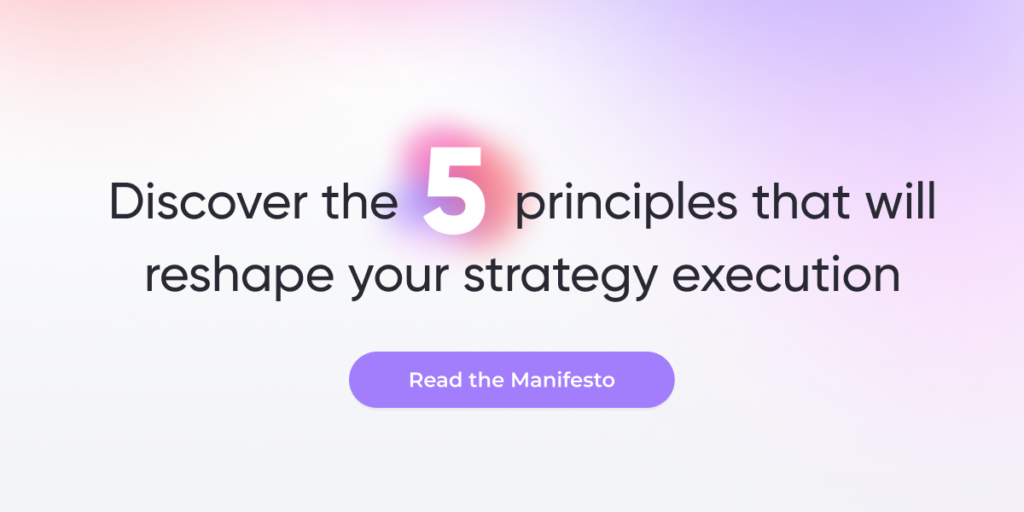
Types of internal communication tools
Choosing the right mix of tools starts with understanding what each category does best. Here’s how the main types of internal communication tools stack up.
Intelligent communication platforms
What they are: These are all-in-one solutions that combine everything a modern workplace needs for employee communication and engagement. They don’t just send messages; they use smart technology to personalize, automate, and measure every touchpoint.
Key features:
- Unified employee profiles built from behavioral data
- Personalized content delivery based on role, interests, and engagement
- Multi-channel orchestration (email, mobile, intranet, digital signage, and more)
- Real-time analytics so you know what’s working
- AI-powered optimization to improve campaigns as you go
Where they shine: If you want every employee to get the right message at the right time, no matter where they work, this is the category for you.
Market leader:Firstup stands out for a reason. Global enterprises such as Amazon, BBC, Dow, Hilton, Kraft Heinz, and Toyota use Firstup to connect millions of employees worldwide. With measurable, personalized communications, they see stronger engagement, clearer alignment, and results that show up in the numbers.
Instant messaging and chat platforms
What they are: These tools make it easy to send quick messages, share updates, or ask a teammate a question in real time.
Key features:
- Direct messages
- Group chats and channels
- File sharing
- Voice and video calls
Popular examples: Slack, Microsoft Teams, Google Chat
Best for: Teams that need fast answers and real-time collaboration tools.
Enterprise intranets and knowledge management
What they are: Think of these communication software options as the digital headquarters for company information. They store, organize, and help people find everything from policies to onboarding materials.
Key features:
- Document management
- Advanced search
- Mobile access for employees on the go
Popular examples: Microsoft SharePoint, Guru, LumApps
Best for: Organizations looking for a reliable, centralized hub where employees can always find what they need.
Video conferencing and virtual meeting tools
What they are: These platforms support live, interactive meetings for teams that aren’t always in the same room, helping recreate the connection of in person interactions and face to face meetings.
Key features:
- High-definition video
- Meeting recording
- Screen sharing
- Built-in chat and integrations
- AI-powered meeting insights
Popular examples: Zoom, Microsoft Teams, Google Meet, Webex
Best for: Companies that rely on meetings, remote teams, or regular face-to-face collaboration.
Employee engagement and recognition platforms
What they are: These communication software tools help build a stronger workplace culture by making employee recognition easy, letting employees recognize one another, share feedback, and celebrate wins.
Key features:
- Social feeds and discussion boards
- Peer-to-peer recognition and reward systems
- Surveys and polls
Popular examples: Bonusly, Nectar, 15Five
Best for: Organizations that care about culture, engagement, and making employees feel valued.
Digital signage and display systems
What they are: These are communication tools for the physical workplace, screens that deliver news, updates, and reminders in real time.
Key features:
- Real-time updates
- Content scheduling
- Location-specific messaging
Popular example: Yodeck
Best for: Frontline workers and employees in manufacturing, healthcare, retail, or any place where not everyone is glued to a computer.
Callout box -> Protip: Most organizations get the best results when they combine multiple tools. The key is making sure they all work together, so employees get clear, consistent information wherever they are.
Essential features of effective internal communication tools

A good internal communication platform does more than send out a stream of messages. It connects people, adapts to your organization’s unique needs, and helps you see what’s really working. Here’s what matters most when choosing a tool that actually supports your team.
Multi-channel communication support
Let’s face it, everyone works a little differently. Some people are glued to email. Others live on their phones. Many don’t even have a desk or a company laptop. That’s why real multi-channel communication is essential.
The right platform helps you reach team members however and wherever they work. This is especially important in an era of remote and hybrid work, where employees might be logging in from the office, their home, or anywhere in between. That might mean sending an email, pinging a mobile app, pushing an SMS for urgent company news, or posting updates on your company’s intranet. For frontline teams, digital signage in the break room or at the job site makes sure no one is left out.
Integration with your current business tools is key, too. You shouldn’t have to juggle a dozen logins or copy information from one place to another. Your communication software should offer a user friendly interface and work smoothly with HR, payroll, scheduling, and project management tools, making your life a little easier.
Firstup stands out for making this simple. You get one place to plan, schedule, and send updates, with full orchestration across multiple channels. This helps streamline communication methods across your entire workforce; no more guessing who got the memo and no more piecing together different systems. Team members gets clear, effective communication, wherever they are.
Audience targeting and personalization
Not every message should go to every employee. The best employee communication software let you customize what each person sees, so the content actually matters to them.
Behavioral segmentation means you can spot trends. Maybe your warehouse team checks texts more than email, or your remote folks engage with app push notifications but ignore the intranet. Attribute-based targeting lets you fine-tune messages by location, job title, department, or target specific groups you want to reach.
Dynamic content and real-time personalization keep things fresh, relevant, and effective. With smart machine learning, the platform learns when to send messages and what kinds of updates each group responds to.
Firstup takes this even further with hyper-personalization. By combining employee attributes with real engagement patterns, Firstup delivers content each employee is most likely to care about. It’s a smarter, data-driven way to cut the noise, so every employee feels seen and included, and no important update gets overlooked.
Analytics and performance measurement
It’s tough to improve communication if you can’t measure it. That’s why strong analytics matter so much.
The best platforms give you real-time feedback: who’s reading, clicking, or sharing your content. You can track engagement, adoption, and even get a read on employee sentiment. Lifecycle analytics let you see how communication effectiveness flows throughout the employee journey, from day one to long-term milestones.
Advanced tools even help you spot patterns or problems before they get serious. Maybe a drop in engagement shows confusion about a new policy, or low participation signals you need a different approach.
Most importantly, your analytics should show actual business results. Can you link better employee communication to higher retention, improved productivity, or a stronger culture? With Firstup, the answer is yes. Their actionable insights help you make informed decisions, tweak your approach, learn what works, and prove your value.
Data security and compliance
Trust matters. Any platform you use needs to keep sensitive information safe and support all the regulations that apply to your business.
This starts with strong encryption, strict access controls, and built-in support for things like GDPR, HIPAA, or any specific rules your industry follows. Approval workflows and audit trails help you keep tabs on who sent what and when, which is important for both accountability and peace of mind. Single sign-on (SSO) makes life easier for employees while keeping your security tight.
Firstup is built for the toughest standards, so you can be confident that your data and your people are protected, no matter what.
Hyper-personalized comms for every employee
Benefits of modern internal communication tools
When you invest in the right internal communication software, you’re doing more than just sending out updates. You’re creating the conditions for better engagement, productivity, and a stronger sense of community across your organization. Here’s what that looks like in practice.
Enhanced employee engagement
Modern employee communication tools make work feel a little more human. Instead of one-size-fits-all messages, employees get updates that actually relate to their job, interests, or shift schedule. When someone sees a message and thinks, “This was meant for me,” it goes a long way toward feeling seen and valued.
It shouldn’t be a one-way conversation, either. The right tools support two way communication so employees can share feedback, ask questions, or just join in without feeling like their input is going into a black hole. Recognition features make it easy to give a quick shoutout, celebrate a team win, highlight employee achievements, or call out someone’s effort right when it matters. A little recognition goes a long way toward making people feel appreciated.
Leadership can be more visible and approachable, too. When leaders share updates, answer questions, or talk honestly about what’s going on, it creates transparent communication and helps build trust. Employees understand what the company is working toward, how their role fits in, and that their voices are being heard. This isn’t just good for morale, though. It’s how you get people genuinely engaged in their work and the bigger mission.
Improved productivity and efficiency
Nobody wants to waste time digging for information or waiting on a response. With the right communication tools, people spend less time chasing down files, managing file sharing, or tracking who has the answer and more time doing work that matters. Resources are organized, search actually works, and quick links mean you’re not wading through old email threads or playing phone tag with IT just to get what you need.
Automation is another lifesaver. Instead of getting bogged down by routine reminders, approvals, or updates, those tasks can run quietly in the background. That frees everyone up for the real work, whether that’s project management, creative problem-solving, or anything else that keeps projects moving.
Collaboration feels easier, too. Whether your teammates are across the hall or across the country, real-time chat, shared workspaces, and virtual team meetings help people make decisions quickly and stay on the same page.
For frontline and remote teams, mobile access is a must. When updates and conversations work on mobile devices or any device, everyone can stay connected, respond faster, and jump in right away; there’s no need to wait until they’re back at a desk. It all adds up to a smoother, less stressful workday, wherever you are.
Stronger organizational culture
A strong company culture depends on clear, consistent employee communication. When everyone gets the same message, no matter their role or location, it’s easier to build a sense of unity and purpose. Storytelling tools help you spotlight successes, share milestones, and bring company values to life.
Real community happens when people can connect across teams and locations. The right platform breaks down barriers, making it simple for employees to collaborate, build professional relationships, learn from each other, and feel like they belong.
Employee communication tools also make change easier. Whether you’re rolling out a big update or working through a transition, keeping everyone informed and involved helps teams adapt and support each other. That’s how culture grows stronger, even as things change.
How to choose the right internal communication platform
Finding the best platform isn’t just about picking the flashiest features or the biggest brand. It’s about what will truly fit your people, your culture, and your goals. Here’s how to get it right.
1. Assess your organization’s unique needs
Start with an honest look at your workforce and how your company communicates today. What do your people actually need from a platform?
Look at your workforce:
- How big is your team? Are you spread across offices, countries, or shifts?
- Do you have a lot of frontline or remote workers, or is everyone mostly in one place?
- How comfortable is your workforce with technology? Is everyone ready for new tools, or do you need to keep things extra simple?
Think about your content:
- What kinds of messages do you send most? Quick updates, detailed policies, emergency alerts, or a mix?
- How often are you communicating? Every day, once a week, or just as needed?
- Which channels do you rely on most? Email, mobile, signage, or something else?
- Are there compliance or security needs that shape what and how you communicate?
Consider integration:
- What systems are already in place? HR, payroll, project management?
- Do you need single sign-on (SSO) or other ways to make life easier for employees?
- Will your new platform need to connect with those tools, or can it stand alone?
Identify pain points:
- Where are things breaking down now?
- Are messages being missed? Are some teams harder to reach?
- Are you seeing confusion, duplicated work, or low engagement?
Don’t be afraid to talk with different teams or send out a quick pulse survey before you start. Sometimes the biggest insights come from the people on the ground.
Taking time to answer these questions will help you focus on what matters, instead of getting distracted by shiny features you might not use.
2. Evaluate platform capabilities
Once you know what you need, start looking at how different platforms stack up.
Unified or point solution?
- Some platforms bring everything into one place (news, chat, recognition, analytics).
- Others are focused on one function and may need add-ons or integrations to do it all.
Personalization:
- Does the platform offer real targeting? Can you send the right content to the right people, using data like department, role, or location?
- Can it learn from engagement patterns and adjust over time?
Scalability:
- Will it grow with you? Can it handle thousands—or even tens of thousands—of users?
- Does it work well for a distributed, global, or hybrid workforce?
Proven results:
- Look for a track record with companies like yours. Have big names or complex organizations found success with this platform?
- Check for case studies, testimonials, and actual outcomes, not just promises.
Spotlight on Firstup: Firstup checks all these boxes and then some. It’s a unified platform used by over 40 Fortune 100 companies, supporting communication for more than 18 million team members worldwide. With advanced personalization, deep analytics, and seamless channel orchestration, Firstup helps organizations deliver the right message, at the right time, to every employee, keeping everyone on the same page.
Callout box -> Tip: Ask for a real demo, not just a marketing walkthrough. See how the communication software handles your most challenging use case, and invite team members who’ll use it every day to give honest feedback.
Implementation and change management
Even the best platform will fall flat if people don’t use it. Plan for a rollout that brings your workforce along.
Phased rollout:
- Start with a pilot group to get feedback, tweak your approach, and fix any hiccups.
- Gradually expand to more teams, locations, or departments as confidence grows.
Success metrics:
- Decide up front how you’ll measure success. Are you looking for higher engagement? Fewer missed messages? Faster response times?
- Track adoption rates and business impact, and be ready to adjust if things aren’t working.
Training and support:
- Don’t leave employees to figure it out on their own. Offer training sessions, office hours, and easy-to-find help docs.
- Make sure managers and team leads are prepared to champion the new platform and answer questions.
Governance:
- Set clear rules for who can send what, when, and to whom.
- Define content management processes so nothing falls through the cracks, and your platform doesn’t become a dumping ground.
Bottom line: Internal communication platforms are about people first, technology second. The right fit makes internal comms smoother, supports your goals, and grows with your company. Take your time, do your homework, and find internal communication software that will help everyone do their best work, together.
Industry-leading internal communication platforms
With so many internal communication platforms on the market, it’s not easy to see what truly sets each apart. Below, you’ll find an overview of the leaders in this space, what makes each one unique, and which business needs they fit best.
Firstup: The intelligent communication platform
Firstup sits at the top of the industry when it comes to intelligent employee communication. Designed for global enterprises, Firstup helps organizations reach every employee, no matter their role, device, or location, with messages that are timely, personal, and measurable.
What sets Firstup apart:
- Hyper-personalization at scale: Uses both employee attributes and behavioral data to deliver messages that matter, when they matter most.
- Unified employee profiles: Brings together data from across your organization to create a single, dynamic profile for every employee, helping you target communication with confidence.
- Multi-channel orchestration: Manages all employee communication from one platform—email, mobile, intranet, SMS, and digital signage—so nobody misses out.
- Real-time workforce intelligence: Detailed analytics show you who’s engaging, where messages are landing, and what could be improved.
- Enterprise-grade security: Meets the toughest standards, including GDPR, HIPAA, and industry-specific needs.
Customer proof: Firstup is trusted by more than 40 Fortune 100 companies, including Amazon, Ford, and Hilton, and reaches over 18 million employees worldwide. If your organization wants a single platform that brings everything together—personalized content, multi-channel orchestration, deep analytics, and a proven track record at the highest level—Firstup is built for you.
Other notable platforms
Communication and chat leaders
Microsoft Teams A powerhouse for organizations already using Microsoft 365. Teams blends chat, video meetings, file sharing, and collaboration tools in one interface. Best for businesses that want tight integration with their existing Microsoft stack.
Slack The pioneer in modern chat-based collaboration. Known for channels, threads, and endless integrations, Slack shines in environments where quick, informal teamwork and notifications are key.
Zoom The go-to for video conferencing, Zoom also supports chat, webinars, and hybrid work features. Best for teams that value easy, reliable video and large-scale virtual meetings.
Google Workspace (formerly G Suite) A complete collaboration suite: Gmail, Meet, Chat, Drive, Docs, and more. Google Workspace is best for organizations looking for cloud-native, all-in-one productivity and employee communication.
Knowledge management and intranet solutions
Guru An AI-powered knowledge platform that makes it easy to search, share, and manage company knowledge. Best for teams that want real-time answers and living documentation, not static wikis.
Confluence Atlassian’s collaboration hub, well-known in technical and development teams. Confluence is ideal for documentation-heavy workflows, team spaces, and project planning.
SharePoint Microsoft’s longstanding platform for enterprise intranets and document management. SharePoint stands out for document storage, advanced permissions, and Office 365 compatibility.
LumApps A customizable, enterprise-focused intranet that brings news, resources, and social features into one platform. Great for connecting distributed teams with a unified experience.
Axero A modern intranet with AI-assisted features and strong mobile access. Axero is popular with organizations wanting community, collaboration, and a personalized employee experience.
Specialized communication tools
Workshop Focused on internal email communications, Workshop makes it simple to design, personalize, and measure company emails. Great for teams that depend on email as a primary communication channel.
Connecteam A mobile-first platform designed for deskless and frontline workers. Connecteam streamlines scheduling, messaging, training, and task management for teams always on the move.
Yodeck A digital signage solution that helps companies display real-time updates, announcements, and emergency messages on screens anywhere in the workplace. Ideal for manufacturing, retail, and healthcare.
Hub All-in-one workplace intranet for small and medium-sized businesses, with an emphasis on engagement and community.
Motivosity A recognition and rewards platform that brings social communication and peer recognition together. Perfect for boosting morale and highlighting contributions.
Enterprise and collaboration platforms
Webex Cisco’s all-in-one suite for meetings, calling, messaging, and team collaboration. Known for security and enterprise-grade reliability.
RingCentral Cloud-based communication with messaging, phone, and video. RingCentral is best for companies looking to unify all business communications in one service.
8×8 A composable platform that offers voice, chat, video, and contact center solutions. 8×8 is a good fit for businesses that want to integrate employee communication with customer relationship management.
Happeo An intranet platform that brings social networking features and Google Workspace integration together. Best for organizations that want to boost internal community with familiar Google tools.
Jive Community-driven intranet that helps employees connect, share, and collaborate. Jive is known for building social capital and making information easy to find.
Employee engagement focused
Nectar A platform for recognition, rewards, and peer-to-peer shoutouts. Nectar is designed to help organizations reinforce values and celebrate everyday wins.
PeopleOne An employee communication and engagement platform with Microsoft 365 integration. PeopleOne is a strong fit for companies looking to bring news, recognition, and collaboration together.
Blink A mobile-first tool for frontline worker communication, offering chat, company news, forms, and scheduling in one app. Blink is well-suited for large, distributed workforces.
Igloo A knowledge-sharing platform that connects desk-based and deskless employees. Igloo helps companies break down silos and foster a sense of belonging.
Choosing the right communication software
Every platform here brings something different to the table. Some are best for fast-paced chat and video, others for knowledge management or building culture. The key is matching your needs with the right solution, then bringing it all together with an internal communication strategy that reaches and engages every employee.
If you’re looking for a truly unified, data-driven approach, one that makes it easy to orchestrate communication across channels, personalize content at scale, and measure real impact, Firstup stands out as the intelligent communication platform built for today’s workforce.
Looking ahead: Building a smarter, more connected workplace
Internal communication has come a long way. What used to be a scattershot mix of emails and announcements is now a world of intelligent, integrated platforms. Today’s tools do much more than just deliver messages; they help shape culture, build engagement, and drive real business results.
If there’s one thing that stands out, it’s this: success depends on finding a platform that fits your people and your goals. The right solution doesn’t just keep everyone in the loop; it makes employees feel valued, heard, and supported. With features like multi-channel orchestration, advanced personalization, and real-time analytics, you can finally meet people where they are and measure the difference communication is making.
Choosing and rolling out a new platform is a big decision, but it’s also an opportunity. This is your chance to rethink how your organization connects, collaborates, and grows, no matter how big you are or where your teams work. By focusing on a unified approach and tools designed for your unique needs, you can create a workplace where everyone has the information, support, and voice they deserve, and a modern internal communication strategy that grows with your organization.
If you’re ready to see what’s possible with a truly intelligent communication platform, now’s the time to take a closer look at Firstup. Your teams, your leaders, and your entire organization will thank you.
Deliver a hyper-personalized employee experience at scale
Download PDF
